#hanzi
Text
10 traditional characters that I didn't know existed

In 2023 I started learning to write traditional characters by hand, so I've been paying extra attention to differences between traditional and simplified forms. In some cases, I didn't even realize the traditional and simplified forms were different!
Here are 10 sets of simplified and traditional characters with subtle differences, 8 of which I only discovered recently. Definitions are adapted from MDBG.
(1)抛 | 拋 pāo
The difference is SO subtle with this one. I have to hold the screen 3 inches from my face to see it. The simplified version has 7 strokes, but the traditional version has 8.
抛 | 拋 pāo - to throw / to toss / to fling / to cast / to abandon
抛弃 | 拋棄 pāoqì - to abandon / to discard / to renounce / to dump (sb)
抛开 | 拋開 pāokāi - to throw out / to get rid of
抛物线 | 拋物線 pāowùxiàn - parabola
(2)滚 | 滾 gǔn
I actually prefer the traditional version, particularly when I'm writing by hand. When I write the simplified version, the 衣 strokes on the bottom always looks awkward under 公 to me.
滚 | 滾 gǔn - to boil / to roll / to take a hike / get lost!
摇滚 | 搖滾 yáogǔn - rock 'n' roll (music) / to rock / to fall off
滚开 | 滾開 gǔnkāi - to boil (of liquid) / boiling hot / Get out! / Go away!
滚烫 | 滾燙 gǔntàng - boiling / scalding
打滚 | 打滾 dǎgǔn - to roll about
(3)匀 | 勻 yún
I think these look pretty much the same when handwritten, but on the computer they are distinct. I definitely prefer how the simplified one looks.
匀 | 勻 yún - even / well-distributed / uniform / to distribute evenly / to share
均匀 | 均勻 jūnyún - even / well-distributed / homogeneous / well-proportioned (figure, body etc)
(4)叙 | 敘 xù
叙 | 敘 xù - to narrate / to chat
叙述 | 敘述 xùshù - to relate (a story or information) / to tell or talk about / to recount / narration / telling / narrative / account
叙事 | 敘事 xùshì - narrative
(5)奥 | 奧 ào
奥 | 奧 ào - obscure / mysterious
It really bugs me that 奥 has a different traditional form, but 澳 (as in 澳门 Macao) does not!
深奥 | 深奧 shēn'ào - profound / abstruse / recondite / profoundly
奥运会 | 奧運會 Àoyùnhuì - Olympic Games; the Olympics (abbr. for 奥林匹克运动会 | 奧林匹克運動會)
奥利给 | 奧利給 àolìgěi - come on, you can do it!
(6)厨 | 廚 chú
厨 | 廚 chú - kitchen
厨房 | 廚房 chúfáng - kitchen
厨师 | 廚師 chúshī - cook / chef
厨艺 | 廚藝 chúyì - cooking skills / culinary talent
Other similar cases:
厮 | 廝 sī - (bound form) together; each other / (bound form) male servant / (bound form) dude; so-and-so
厢 | 廂 xiāng - box (in theater) / side room / side
厦 | 廈 shà - tall building / mansion / rear annex / lean-to / also pr. xià
(7)刹 | 剎 chà/shā
Whether the bottom looks like 朩 or 木 seems to be somewhat stylistic and can vary by font. But the little 点 is a consistent difference.
刹 | 剎 chà - used to transcribe several words originally from Sanskrit
刹那 | 剎那 chànà - an instant (Sanskrit: ksana); split second; the twinkling of an eye
刹 | 剎 shā - to brake
刹车 | 剎車 shāchē - to brake (when driving) / to stop / to switch off / to check (bad habits) / a brake
(8)侣 | 侶 lǚ
侣 | 侶 lǚ - companion
伴侣 | 伴侶 bànlǚ - companion / mate / partner
情侣 | 情侶 qínglǚ - sweethearts / lovers
Other similar cases:
宫 | 宮 gōng - palace / temple / castration (as corporal punishment) / first note in pentatonic scale
吕 | 呂 lǚ - pitchpipe, pitch standard, one of the twelve semitones in the traditional tone system / surname Lǚ
(9)别 | 別 bié
I've known about the traditional form of this character for a while now, but to be honest, it still looks like 别 written incorrectly to me...sorry.
别 | 別 bié - to leave; to part (from) / (literary) to differentiate; to distinguish / (bound form) other; another; different / don't …! / to fasten with a pin or clip / to stick in; to insert (in order to hinder movement) / (noun suffix) category
差别 | 差別 chābié - difference; distinction; disparity
分别 | 分別 fēnbié - to part; to leave each other / to distinguish; to tell apart / difference; distinction / in different ways; differently / separately; individually
区别 | 區別 qūbié - difference / to distinguish / to discriminate / to make a distinction
性别 | 性別 xìngbié - gender / sex
个别 | 個別 gèbié - individually; one by one / just one or two; exceptional; rare
(10)丢 | 丟 diū
OK, I literally just realized there are separate simplified and traditional forms for this character while working on this post 😭 I feel utterly betrayed.
丢 | 丟 diū - to lose / to put aside / to throw
丢脸 | 丟臉 diūliǎn - to lose face / humiliation
丢人 | 丟人 diūrén - to lose face
丢掉 | 丟掉 diūdiào - to lose / to throw away / to discard / to cast away
丢失 | 丟失 diūshī - to lose; to misplace
跟丢 | 跟丟 gēndiū - to lose track of
See similar posts:
Characters I used to write incorrectly
Characters that look TOO similar
Traditional characters that haunt me
#my learning#traditional characters#chinese characters#hanzi#chinese#mandarin#mandarin chinese#chinese language#studyblr#langblr#learning languages#language learning#chinese langblr#mandarin langblr#languageblr
81 notes
·
View notes
Text
in like svsss fanfictions when characters refer to themselves as 'this one' what exactly are they saying? Like the hanzi, the pinyin, etc.
#chinese language#learning chinese#learning languages#languages#learning mandarin#foreign languages#Chinese#mandarin#mandarin langblr#hanzi#pinyin#help#svsss#svsss fandom#svsss fanfiction#moshang#luo binghe#shen qingqiu#shen jiu#scum villian self saving system#scum villain
86 notes
·
View notes
Note
suggestions and advice on how to remember and memorize characters? it's the part I'm finding the most difficult
i struggle w this too rn bc of the pace my professor has been going at. if you dont have a practice workbook i def recommend those bc they show the stroke order and just give space for you to write repetitively. otherwise just try and write sentences using the characters/words you know or generally practice writing/reading as much as possible.
i like skritter a lot for practicing characters or learning new vocabulary related to things im actually interested in and would talk about in real life rather than a lot of the stuff ill learn in class.
because of the lack of alphabet a lot of people (me included) tend to rely heavily on pinyin but since ive started learning zhuyin i’ve definitely felt it helps. not having romanization means i have to actually try and cant just fall back and give up like i would if something was shown only in characters + pinyin.
i specifically like using my ipad or an external monitor when im studying characters so i can blow up the characters and look at them like an image rather than a letter (im learning traditional these little things have so many strokes i like to make sure i can see/recognize all of them) then also i feel like it stays better as a visual in my brain.
im still taking elementary level mandarin so realistically i dont know all that much, only what ive been trying and what works for me if anyone else has tips pls feel free to reply
#studyblr#study blog#langblr#langblog#language learning#languageblr#chinese langblr#mandarin langblr#studyblr community#chinese characters#hanzi
25 notes
·
View notes
Text
There was a post that crossed my dash about the character for dream meng/mung6 (don't know which drama) but some dude got in trouble for using 14 strokes instead of the 13 stroke version of the character. Which got me thinking... I'm pretty sure I learned the 14 stroke version where it looks like grasshopper antennae on top instead of a bar.
So I decided to look it up while using both version for today's learning/practice. Using both a watercolor brush and a fountain pen with mini-bent nib today.
Parts:
grass hair
4
a hat
the 'going down' part of sunset (夕陽)



Apparently it's once again down to regional differences. The tufts of hair was used in HK and Taiwan (probably old gen only now) and is the older traditional version. The one where the hair is a whole piece is used in like... China and Japan.
So this makes me wonder why that character in that drama (idk what drama) was penalized for writing the word using a character style that would have been period appropriate in a costume drama? The connected crown is newer. :O
And now with Simplied, they grew a forest instead of hair, threw away the hat and let the sun set. So imagery-wise I'm getting.... dream = sun setting as a forest grows darker and darker. I kinda like that.

Bonus juk6gan2 肉緊 which I have been told is indeed outdated slang, so I'M BRINGING IT BACK. Cantonese for 'meat tight' = THE TENSION YOU FEEL WHEN YOU'RE DEALING WITH CUTE AGGRESSION.
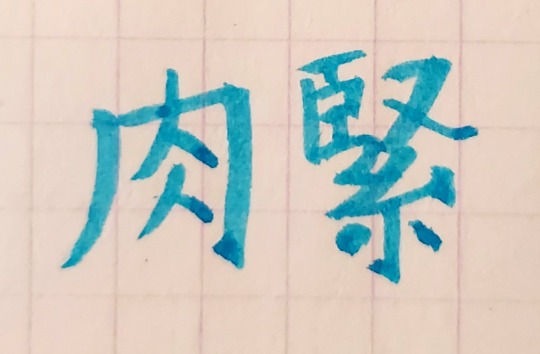

However, if you reverse the order to 緊 肉 then it means "tight muscles". Like you haven't stretched enough and things are stiff. I have no idea if this is how it's used in mandarin. Feel free to let me know. not used this way in mandarin
Question: What's the use difference when both 夕 (alone) and 夕陽 ? Since both mean sunset...? Answered!
20 notes
·
View notes
Text

me and my emotional support learning of Mandarin Chinese
15 notes
·
View notes
Text

If you know you know
#and if you don't this is the character with most strokes in Chinese language#biang#from#biang biang mian#and I tried to fit it into a tiny square#chinese language#studyblr#chinese studyblr#langblr#100 days of productivity#chinese langblr#I was just showing my students how it would be written in a square#tbh I think they're less annoyed with their “3 strokes per word” hànzì homeworks now lol#hanzi#chinese character#kanji
45 notes
·
View notes
Text

Path to perfection ❤️
33 notes
·
View notes
Text
youtube
I just had the unique experience of reading a passage simultaneously (slightly) with a reading in a cursed conlang only to realise it's the opening lines to the Bee Movie.
#one thing that kind of bugged me was the graphic of the 心 in 爱#languages#chinese#hanzi#conlang#cursed conlang#youtube video#Youtube
22 notes
·
View notes
Text
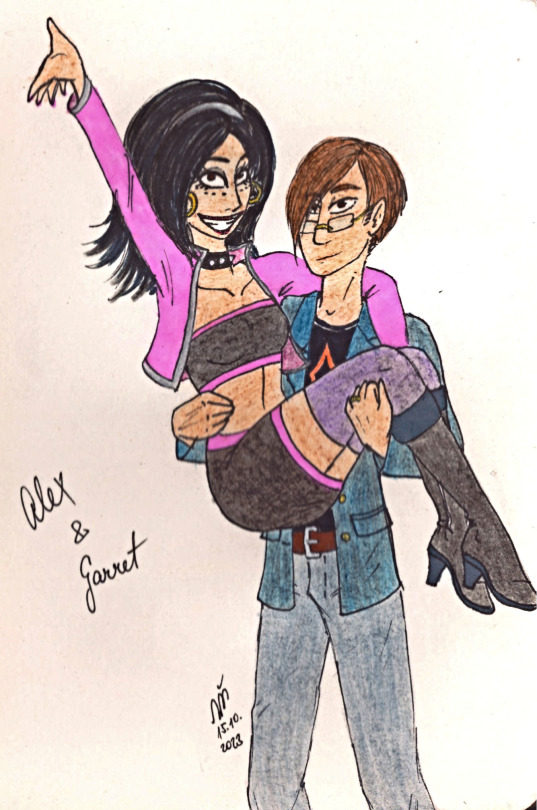



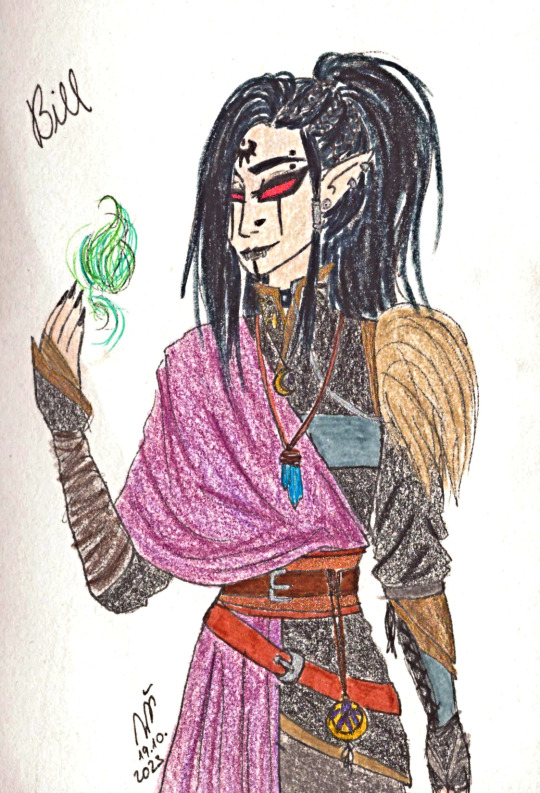


OC-tober 2023, pt. 3
Day #15 - Fav ship: Alejandra "Alex" Velasquez & Garret Doran
Day #16 - Kawaii: Shandri
Day #17 - Rococo: Helen "Nelly" Riley
Day #18 - Fantasy to Modern: Weron
Day #19 - Modern to Fantasy: Bill Black
Day #20 - Meeting the Creator: Johannes "Hanzi" Siegler
Day #21 - Ballgown: Jemma Lassey
#oc-tober#oc-tober 2023#my ocs#original characters#character design#alex velasquez#garret doran#shandri#helen riley#weron#bill black#hanzi#jemma lassey#otp#elves#kawaii aesthetic#kawaii outfit#historic fashion#rococo fashion#the witcher ocs#mage#ocs meeting the creator#ballgown#glam fashion#my art#traditional art#artists on tumblr
12 notes
·
View notes
Photo

I’ve been going through some of my grandma’s things and found a vase painted with bamboo and this poem but I have no idea what it says - I recognise three characters and OCR is no help
Can anyone help me with a translation?
26 notes
·
View notes
Text
When you don't recognize a familiar character
Due to different fonts, styles, and variants, sometimes it's hard to recognize a character that you thought you knew well. I collected 3 examples that I've personally encountered online. Let's take a look~
Below, the character in the blue bubble shows what I'm used to seeing.
令 lìng
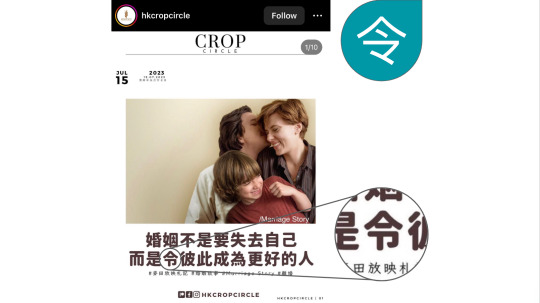
If you look at Wiktionary, you will see that there are a few different styles/versions of the character 令. For instance, you may see the top with a 丶 (点, the dot stroke) or a longer, flat line. But what really threw me off here was the bottom half, which looks quite different here from what I am used to.
灰 huī
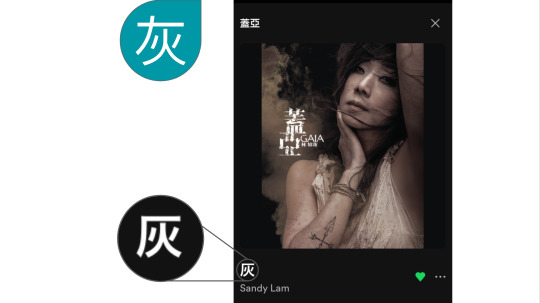
I was so confused by the name of this Sandy Lam song on Spotify. I drew it in Pleco, but I didn't get any matches. I thought maybe it was 灭 miè. Eventually I looked up the album tracklist and learned it's 灰. Wiktionary seems to say this is the Japanese variant of 灰, but I think it comes down to the font Spotify uses.
真 zhēn

Despite 眞 and 真 looking quite different, I actually didn't have much difficulty reading 眞 due to context. MDBG lists it as a variant of 真. This video was on Instagram, but I think it's reposted from 抖音 (Douyin). I see 眞 on a lot of 抖音 reposts, so I assume it's due to the font used on 抖音.
#my learning#nerdy language stuff#chinese#mandarin#mandarin chinese#chinese language#studyblr#langblr#learning languages#language learning#chinese langblr#mandarin langblr#languageblr#chinese characters#hanzi
102 notes
·
View notes
Text
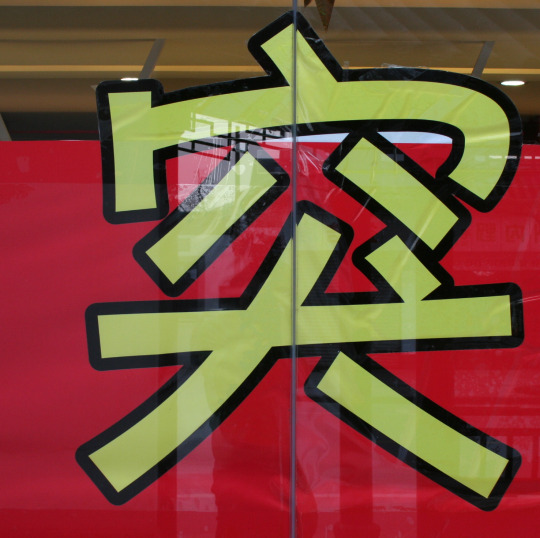
突 = to dash or move forward quickly; abruptly; suddenly; unexpectedly, protrude
It's all about things moving forward and unexpectedly with this one!
Random words that come to mind include unexpectedly or out of the blue 突然 (tūrán), as well as conflict 冲突 (chōngtū) or 突出 (tūchū), something that is prominent or that sticks out.
突发 (tū fā) is interesting as well — it means to break out or appear unexpectedly... like 疾病突发 (jí bìng tū fā), the outbreak of an illness.
It's also a cute onomatopeia for things that have a tapping sound or that chug along, like when your heart goes pit-a-pat (你的心突突地跳, nǐde xīn tūtū de tiào).
#mandarin#learn mandarin#chinese#language learning#learning chinese#chinablr#mandarinblr#studyblr#普通话#国语#中国#汉字#中文#汉语#hanzi#chinese characters
120 notes
·
View notes
Text
there's a YouTube video like "why doesn't Chinese have any circles?" and it's a youtuber asking it to a chinese woman in some sort of language museum and she proceeding to explain the entire history of the chinese writing system with zero mention of why there are no circles today. Then the video ends, no answer has been given.
5 notes
·
View notes
Text


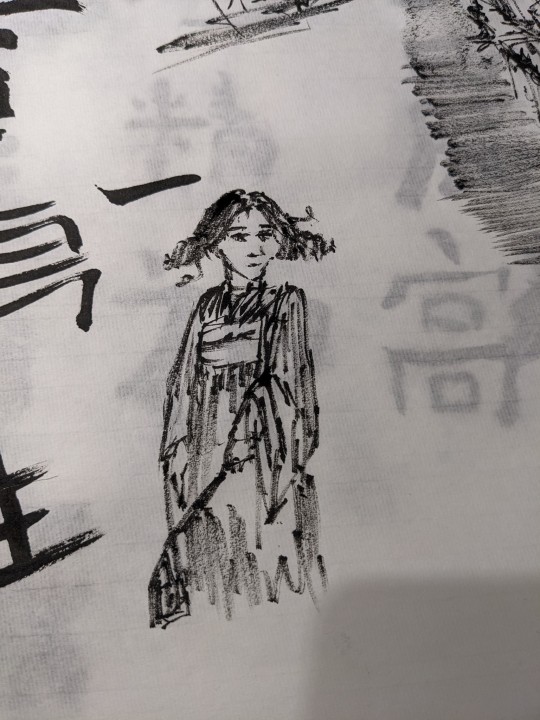


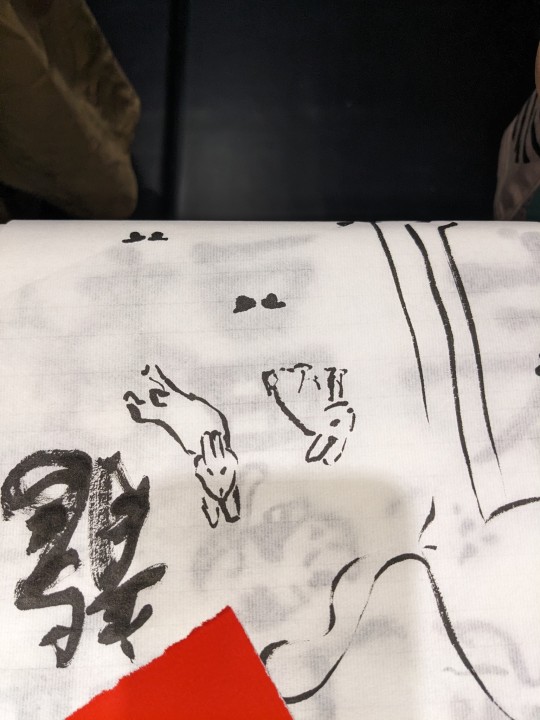

Attended a calligraphy party because that's what adults do at new years, apparently
2 notes
·
View notes
Text

Day 20 - Meeting the Creator: Johannes "Hanzi" Siegler
He's very well aware this sudden attention just can't be good :D
#oc-tober#oc-tober 2023#my ocs#original characters#johannes 'hanzi' siegler#hanzi#ocs meeting the creator#my alter ego#my art#traditional art
3 notes
·
View notes
